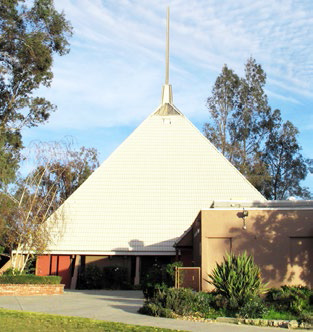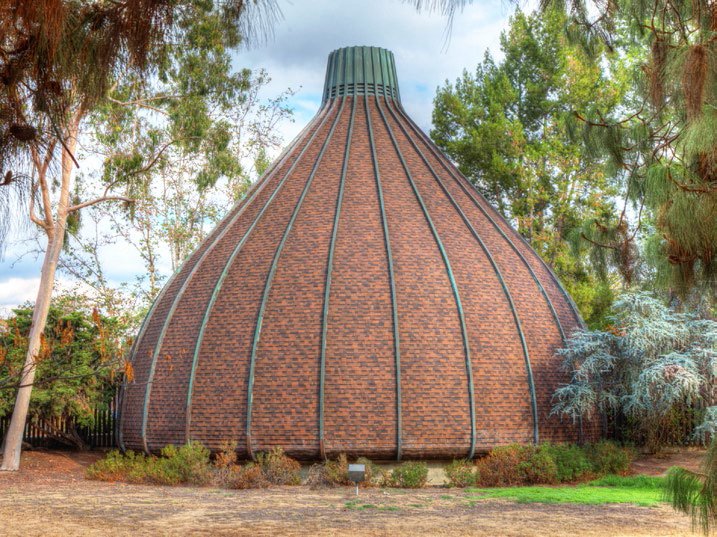When God Went Mod - Page 3
 |
|
|
 |
|
|
 |
|
|
Belluschi was responsible for one of California's most startling churches, San Francisco's Cathedral of Saint Mary of the Assumption, with its soaring interior of concrete hyperbolic parabolas supporting a concrete shell dome streaked with stained glass.
The cathedral has its detractors, who suggest its exterior resembles the agitator of a washing machine.
Another church that suggested comparisons to something more commonly found around the house is the Sepulveda Unitarian Universalist Society, located in North Hills. The window-less dome from 1964 has been informally dubbed 'the onion,' because, as the Los Angeles Conservancy puts it, "with its round plan, bulbous shape, and near-total lack of windows, it looks like a giant space-age onion." The designer was Frank Ehrenthal.
If the need to "find our own way to God" was paramount both for architects and churchgoers in choosing modern styles, the story of St. Mary's Cathedral displays another, more specific reason.
How people worshipped, how they related to the church hierarchy, and how they functioned in their church as more socially conscious activities were taking place required new designs.
Some of these changes came out of the Second Vatican Council in the early 1960s, whose goal, Italian author and engineer Sergio Pace has written, was to "reform Catholic liturgy from the ground up."
Vatican II, as the council was called, was aimed at Catholics, but similar trends towards 'ecumenism' (better relations between different religions), church unity, and a reformed liturgy were common in the postwar era among many faiths.
Besides dropping Latin for vernacular tongues, Vatican II also aimed at more personal, less hierarchic worship.
While writing about architect-engineer Pier Luigi Nervi, who collaborated with Belluschi on St. Mary's, Pace called the San Francisco cathedral "a project that could play a critical role in importing the Vatican Council reforms to the United States."




